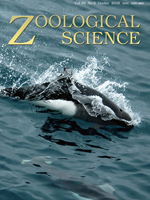Bucrates lanista, the most southerly distributed species in the genus Bucrates Burmeister, was originally described from Brazil based on a female collected in the state of Rio Grande do Sul, but the species has not been recorded since 1918. In this work, we report that B. lanista inhabits the Pantanal Wetland in the state of Mato Grosso do Sul and, for the first time, describe the male. Individuals of B. lanista are gregarious and present a brown/green color dimorphism; this behavior and color variation are also observed in species of closely related genera. Individuals from the Pantanal vary slightly from those of Rio Grande do Sul. The karyotype was determined to be 2n♂ = 21 = 20 X0 and 2n♀ = 22 = 20 XX. The X chromosome is metacentric and the largest of the complement, and all of the autosomes are submetacentrics. All chromosomes solely present telomeric (TTAGG)n repeats at their ends, and some chromosomes present positive and negative DAPI bands.
How to translate text using browser tools
1 October 2016
Bucrates lanista Rehn 1918 (Tettigoniidae: Conocephalinae): The First Record from the Brazilian Pantanal, the First Description of the Male, the First Karyotypic Report for the Genus, and the First Telomeric Hybridization of the Subfamily
Juliana Chamorro-Rengifo,
Renan da Silva Olivier,
Douglas Araujo
ACCESS THE FULL ARTICLE

Zoological Science
Vol. 33 • No. 5
October 2016
Vol. 33 • No. 5
October 2016
chromosomes
Copiphorini
katydids
Molecular cytogenetics
peptide nucleic acid probe
telomeric in situ hybridization




